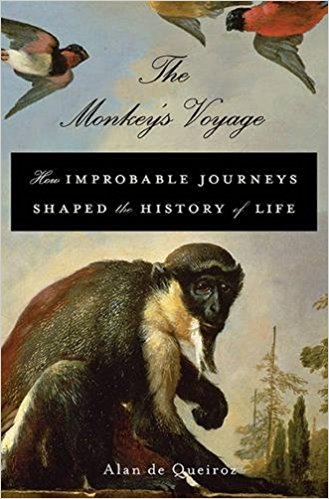 |
The Monkey's Voyage How Improbable Journeys Shaped the History of Life
Alan de Queiroz
Basic Books, 2014
ISBN: 978-0-465-02051-5 |
If you are interested in biogeography but relatively uninformed in the field, I suspect that you will find this book enjoyable and enlightening. The premise of this account is to convince the reader that the current distribution of living organisms on land masses (think continents and islands) can be explained mostly through oceanic dispersal rather than vicariance, the separation of organisms by the slow but continuous action of plate tectonics shifting the land masses away from each other. This is achieved by walking the reader through a historical account of the evidence, but without the painful technical details. In essence we learn how plate tectonics theoretically and straightforwardly explains the distribution of living organisms, but how ultimately the advent of molecular biology (DNA and protein sequencing) contradicts this view.
Clearly the author champions oceanic dispersal and uses this book to make his case, evidence in hand, and hopes that the reader agrees. Fortunately this personal bias is counterbalanced by an objective exposition of all the evidence, and the reader is introduced to some of the main players who argue in favor of vicariance and why they still hold on to their views. Perhaps the most enjoyable aspect of the book is not learning the significance of oceanic dispersal (as the evidence is clear but rather uninspiring and ultimately obvious) but the fact that the field is so contentious. It is always revealing to see that scientists can bicker as avidly as school children and defend their views even in the face of contradictory evidence. There are things to learn from this book, but I emphasize that if the reader is not actively interested in biogeography he/she will most likely put down this book before reaching the end- it simply is not a compelling read.
